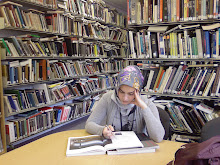

"The history of Xanthos is quite a violent - the Xanthosians twice demonstrated the fierce independence of the Lycian people when they chose to commit mass suicide rather than submit to invading forces. The Xanthosian men set fire to their women, children, slaves and treasure upon the acropolis before making their final doomed attack upon the invading Persians. Xanthos was later repopulated but the same gruesome story repeated itself in 42 BC when Brutus attacked the city during the Roman civil wars in order to recruit troops and raise money. Brutus was shocked by the Lycians' suicide and offered his soldiers a reward for each Xanthosian saved. Only 150 citizens were rescued.
We made our houses graves
And our graves are homes to us
Our houses burned down
And our graves were looted
We climbed to the summits
We went deep into the earth
We were drenched in water
They came and got us
They burned and destroyed us
They plundered us
And we,
For the sake of our mothers,
Our women,
And for the sake of our dead,
And we,
In the name of our honor,
And our freedom,
We, the people of this land,
Who sought mass suicide
We left a fire behind us,
Never to die out...
Poem found on a tablet in the Xanthos excavations, translated by Azra Erhat
Xanthos became the seat of an archbishopric in the 8th century, but was deserted during the first wave of Arab raids in the 7th century.
Although Charles Fellows carried away most of the finds of Xanthos (now in the British Museum) many interesting monuments and structures remain, including two of the most interesting tombs in Lycia.
Perhaps the most beautiful thing Fellows took from Xanthos was The Nereid Monument, a very large and elaborate Lycian tomb dating from about 380 BC, an interesting mix of Greek and Lycian styles. Other notable objects taken were the lovely Lion Tomb and the Tomb of Payava."
(http://www.lycianturkey.com/lycian_sites/xanthos.htm)

No comments:
Post a Comment